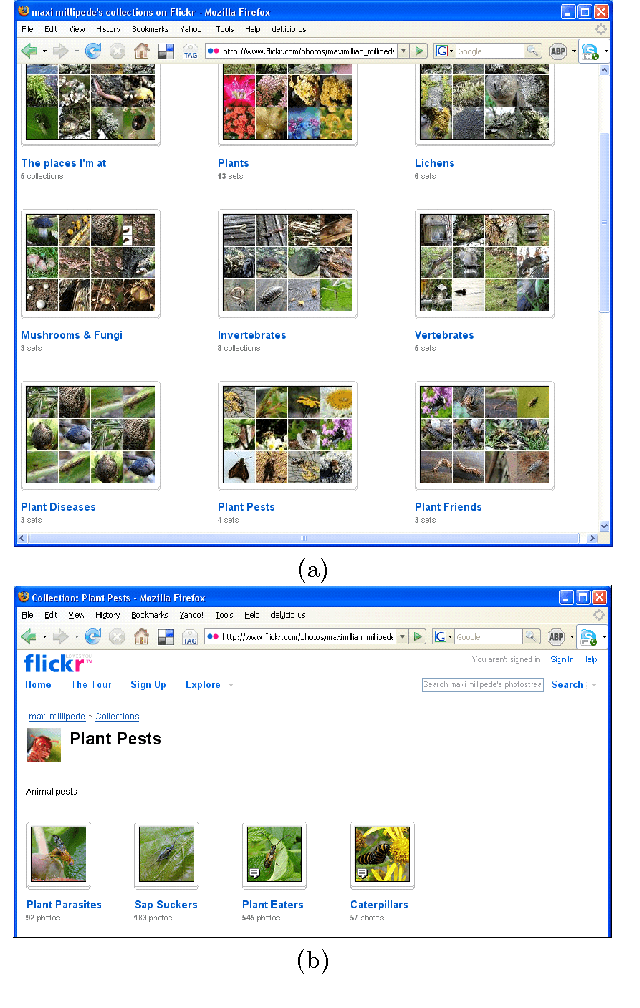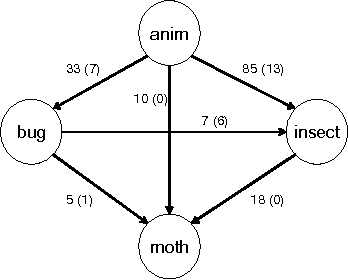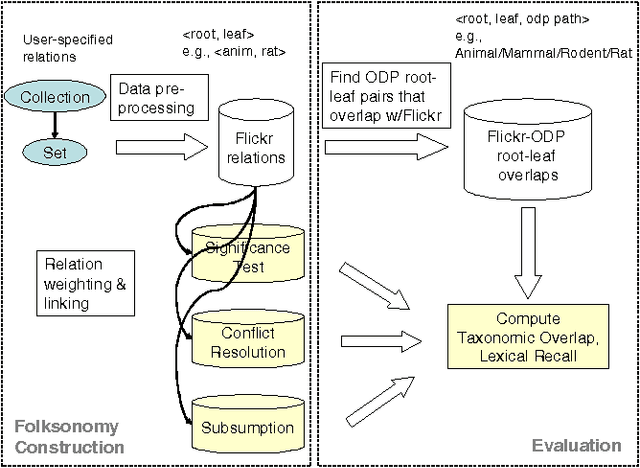Constructing Folksonomies from User-specified Relations on Flickr
Paper and Code
May 24, 2008



Many social Web sites allow users to publish content and annotate with descriptive metadata. In addition to flat tags, some social Web sites have recently began to allow users to organize their content and metadata hierarchically. The social photosharing site Flickr, for example, allows users to group related photos in sets, and related sets in collections. The social bookmarking site Del.icio.us similarly lets users group related tags into bundles. Although the sites themselves don't impose any constraints on how these hierarchies are used, individuals generally use them to capture relationships between concepts, most commonly the broader/narrower relations. Collective annotation of content with hierarchical relations may lead to an emergent classification system, called a folksonomy. While some researchers have explored using tags as evidence for learning folksonomies, we believe that hierarchical relations described above offer a high-quality source of evidence for this task. We propose a simple approach to aggregate shallow hierarchies created by many distinct Flickr users into a common folksonomy. Our approach uses statistics to determine if a particular relation should be retained or discarded. The relations are then woven together into larger hierarchies. Although we have not carried out a detailed quantitative evaluation of the approach, it looks very promising since it generates very reasonable, non-trivial hierarchies.
 Add to Chrome
Add to Chrome Add to Firefox
Add to Firefox Add to Edge
Add to Edge